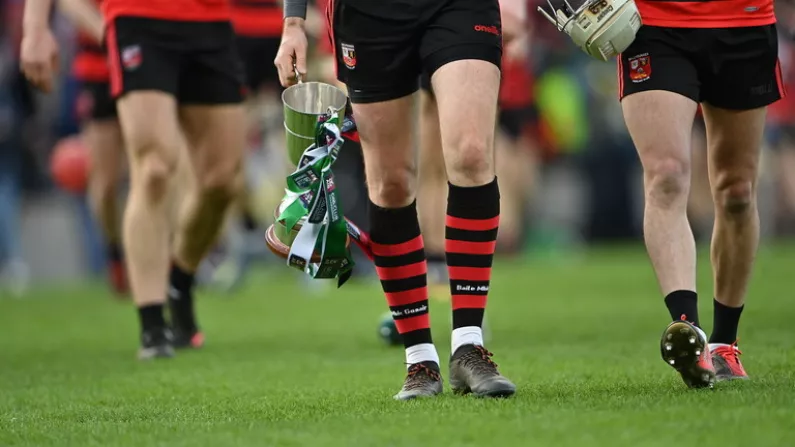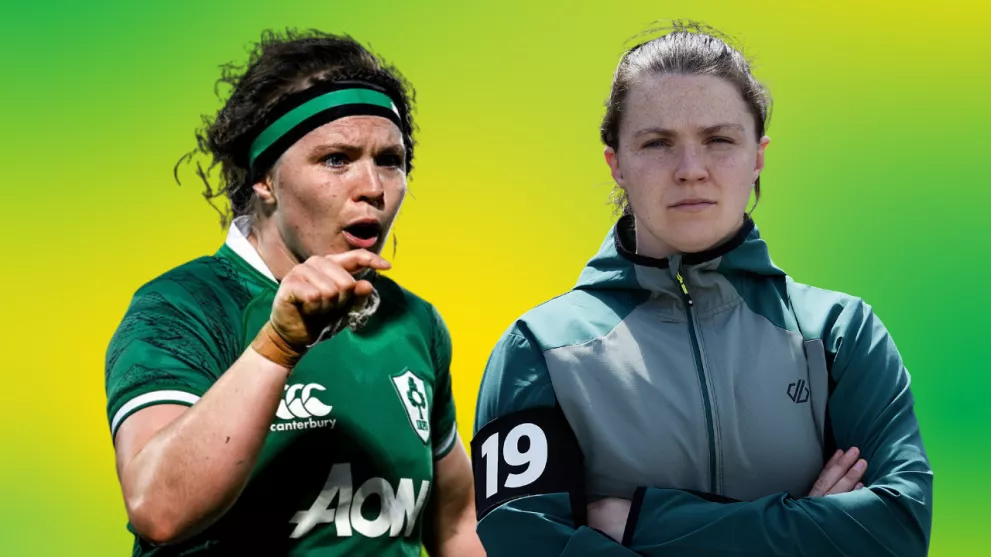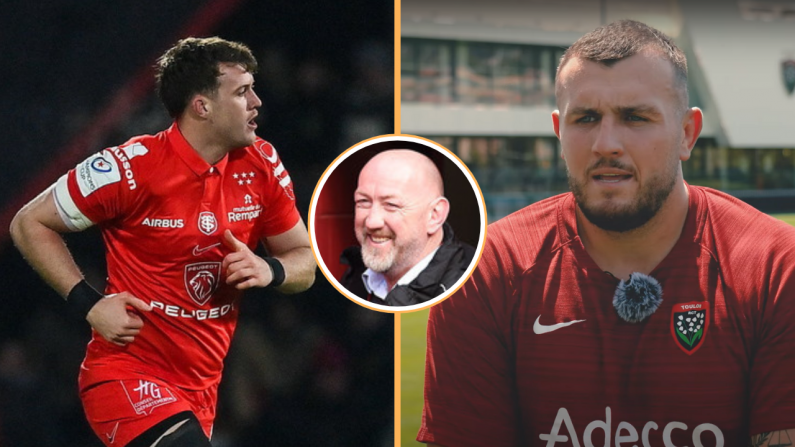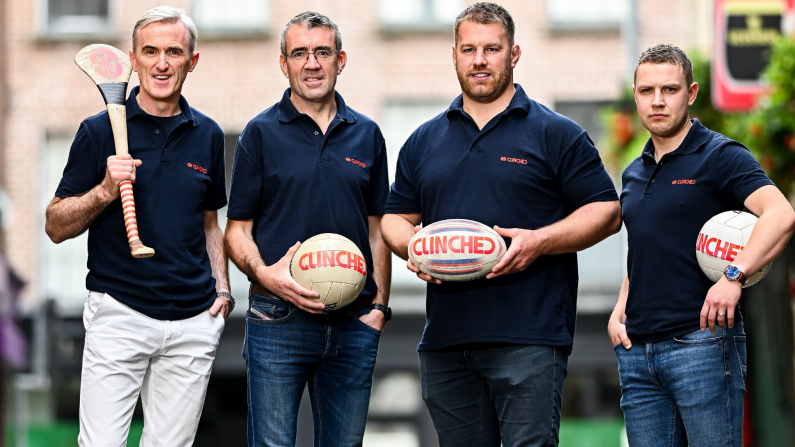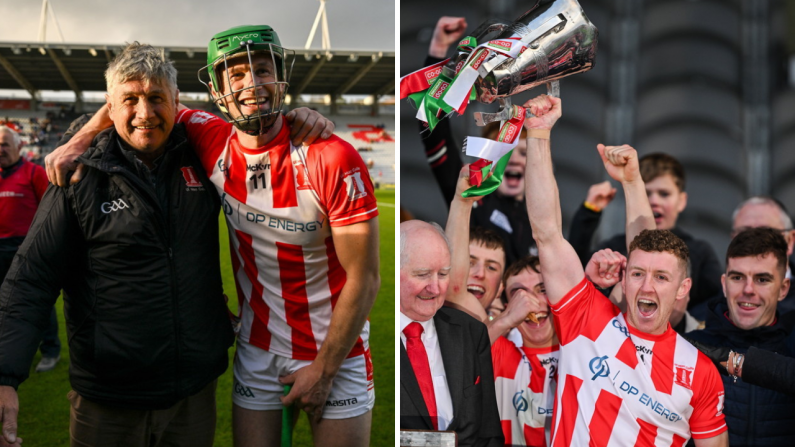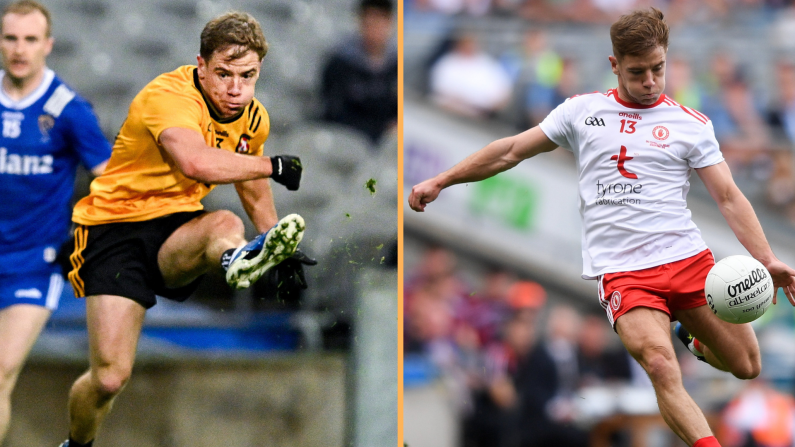One of Gráinne McElwain's hopes is that Scéalta na gCorn helps solve some mysteries, and find the GAA's missing silverware.
The new six part TG4 series, which gets underway at 8:30pm on September 14th, takes a look at the stories behind the cups, trophies and shields lifted by victorious Gaelic games players down the years.
"A lot of cups have gone missing," explains McElwain, presenter of the series.
"We met people who really wanted to find these cups, and restore them. There are still some cups we were looking for that are gone. Nobody knows where they are.
"That's what will be really great about this series, if people realise 'I have that cup! It's in the attic'. As the series progresses, you'll see what cups are missing."
'There are over 2000 pieces of GAA silverware'
One of those lost and found was the Little Norah Cup, presented to the winners of Cork's South West Junior A Football Championship for nearly half a century up to 1997.
While he was writing his book about the championship, The Quest For Little Norah, Dunmanway man Tom Lyons realised the cup was missing.
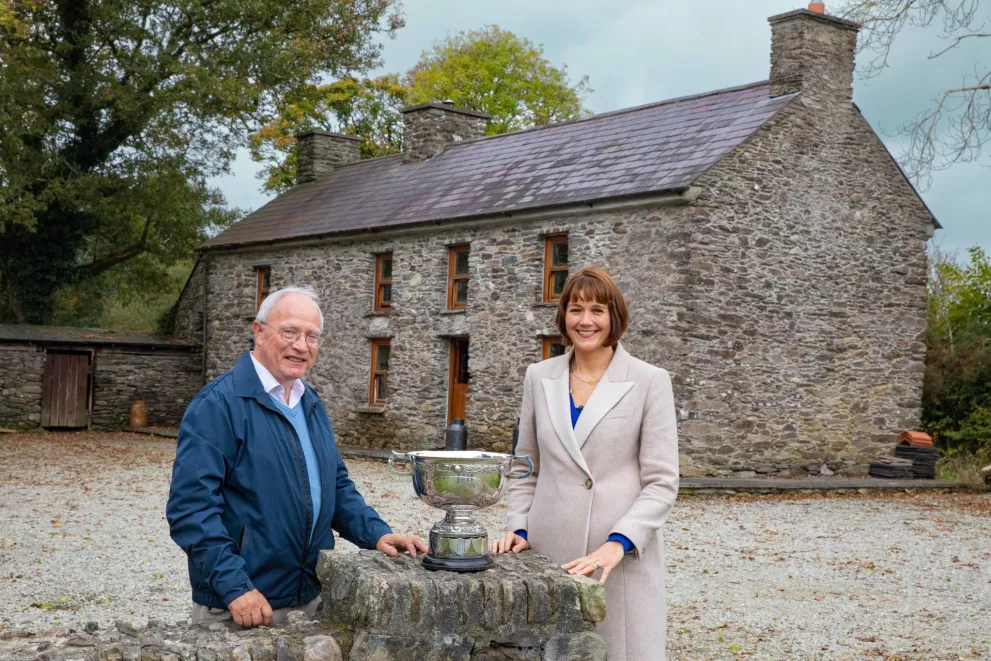
Tom Lyons and Gráinne McElwain with the Little Norah Cup
"He wrote a column in a local paper looking for the cup as he wanted it for the launch of his book," explains McElwain.
"The cup was found in a local house under a bed. Someone had won it, forgot about it. This young lad came back, and said to his father, 'You know what, I think we have that cup under my bed', and so it was."
The first episode focuses on Dublin, and highlights the stories of Máire Ní Chinnéide, the first president of the Camogie Association; Kathleen Mills, one of the most successful Gaelic games players ever with 15 All-Ireland medals; and Tommy Moore, a Kilkenny man for whom the All-Ireland Senior Club Hurling Championship cup is named.
Moore was a talented hurler, winning two All-Ireland titles with Dublin. He was also a publican, running The Moore House (what is now known as Brannigans) on Cathedral Street. All-Ireland winning hurling teams traditionally visited the pub with the Liam MacCarthy Cup on the day after the final. The Moore House was also a go-to landing spot for those moving from rural Ireland to the city.
"The story goes that if you walked into Moore's pub with a hurl in your hand, you were guaranteed a job and some place to stay," says former Faughs president Monica Spellman during the first episode. Moore was chairman of Faughs, Dublin's most successful hurling club, for 40 years.
"Tommy sadly passed away in 1973," says Spellman.
"The All-Ireland club championship was a very new competition at that time. It had only come into existence around 1971. There was no trophy for the competition. So the club decided that in Tommy's honour, that we would donate a cup to Croke Park."
Tar ag taisteal na tíre le Gráinne McElwain ar Séalta na gCorn.
Tune in to discover the stories behind our sporting trophies.
🏆 Scéalta na gCorn
📅 14 Meán Fómhair / 14th September
📺 @TG4TV pic.twitter.com/oPlCjiazlq— Spórt TG4 (@SportTG4) September 6, 2022
In subsequent episodes, McElwain visits her native Monaghan, her adopted county Galway, Antrim, Donegal, and Cork. For McElwain - who was an Irish and history teacher before she worked in the media - this series is the confluence of several streams in her life.
"There are over 2000 pieces of GAA silverware around the country," she says.
"We know the main GAA cups: Liam, Sam, Brendan Martin, and Sean O'Duffy. There are so many cups in each county that are hoisted in the air and nobody has an idea of where they come from because it's forgotten who these people were.
"There were so many stories. Obviously, so many sad stories, people who had passed away, and untimely deaths, people who had died very young. In the GAA, cups can only be named after people that are deceased. In ladies football, it can be both.
"There are so many ordinary people who have dedicated their lives to the GAA in administration roles. We found out about how much they'd done for the GAA.
"It was a privilege to be in people's company when they were talking about loved ones, and how much these cups being named after them meant to the family. People forget because it happened so long ago, but the family don't forget. And every time that cup is raised, or spoken about, you're reliving that person's memory, and the role they played in the GAA."

